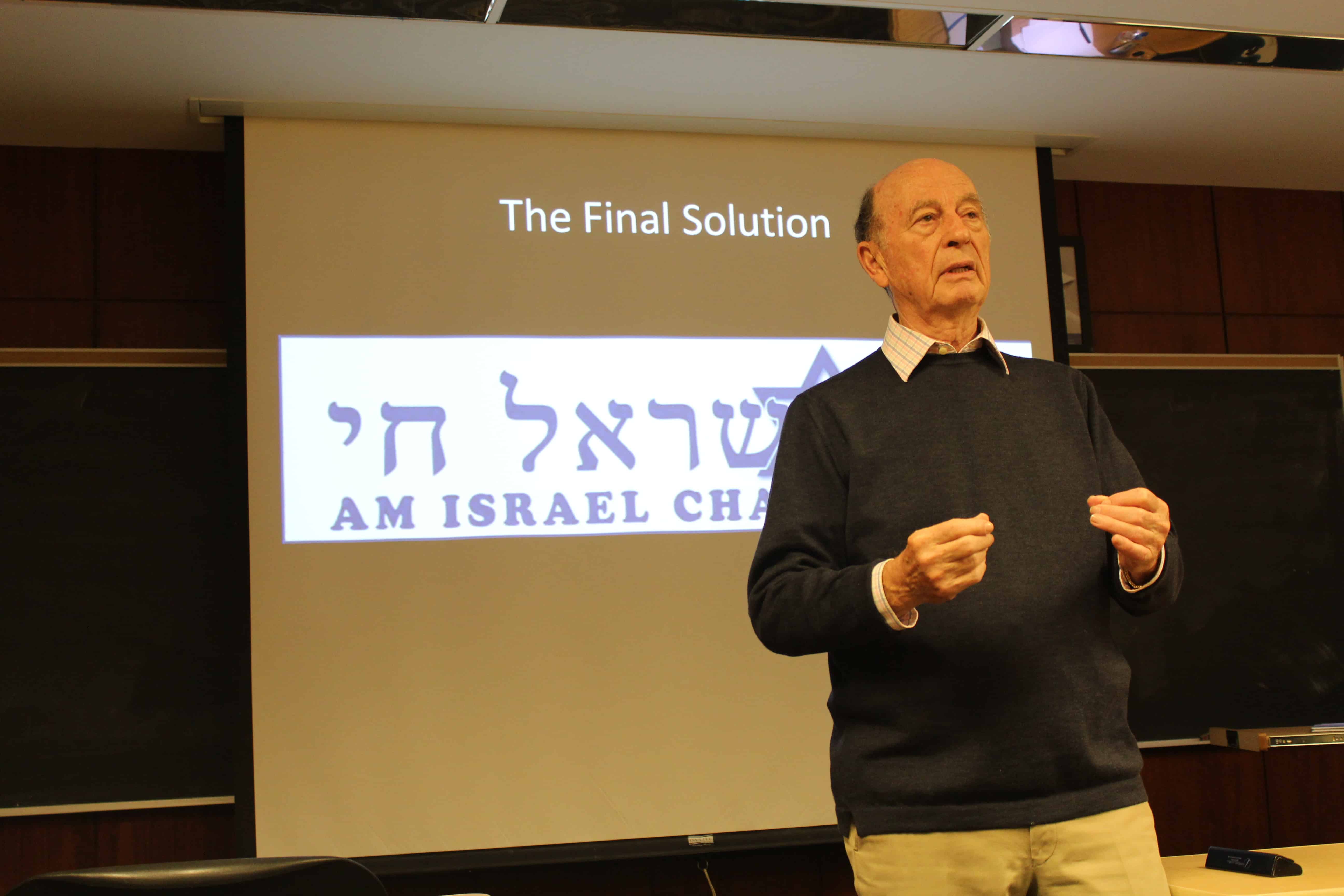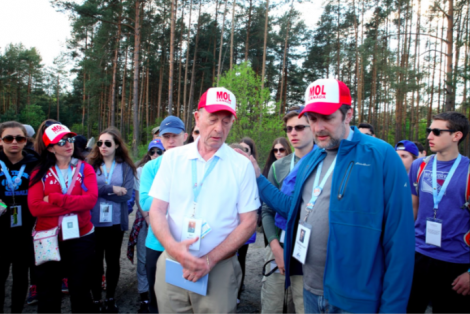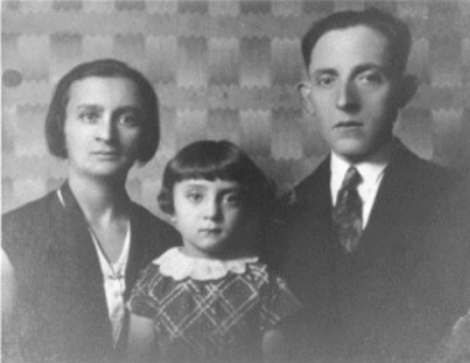For years, Sol Nayman did not consider himself a true survivor of the Holocaust. Having never been in a concentration camp nor faced a Nazi soldier, it wasn’t until many years after his displacement during World War II that he felt comfortable with this label.
After internalizing the definition of ‘Holocaust survivor’ displayed at the United States Holocaust Memorial Museum in Washington, DC, Nayman realized that the burden of Holocaust education now fell on him too. He began to record his story, in the hopes of transmitting it to as many people as possible. The museum’s official definition of survivors is “any persons, Jewish or non-Jewish, who were displaced, persecuted, or discriminated against due to the racial, religious, ethnic, social, and political policies of the Nazis and their collaborators between 1933 and 1945,” a category into which Nayman surely falls.
In advance of International Holocaust Remembrance Day on January 27, Nayman was hosted on campus by Hillel at the University of Toronto. He spoke to a roomful of students who hung on his every word, journeying with him from a small town in Poland, to the wilderness of Siberia, to the urban paradise of Toronto.
When the war began in 1939, Nayman’s life in the small Polish town of Stoczek Wegrowski was changed forever. At the young age of four, he watched with horror as the ‘Wehrmacht’ trucks and troops rolled in during Nazi Germany’s blitzkrieg invasion of Poland; he looked on as their beloved village was razed to the ground.
Along with his siblings and parents, Nayman fled to the nearby forests to escape the destruction of his town.
His family travelled to Bialystok in eastern Poland, which, under Soviet rule, had become a refuge for many Jews. Nayman explained that when Stalin deported hundreds of thousands of Jews to labour camps throughout the Soviet Union, he had inadvertently saved their lives. The Naymans were shuttled into filthy and foul cattle cars, where a hole in the floor served as the bathroom. After a journey of several weeks and thousands of kilometres, they arrived in Syktyvkar, Russia.
Nayman explained his family’s motto for survival: “Make it through today, and maybe you’ll see tomorrow.” It was with this mindset that he and his family survived four years in a labour camp under extreme conditions, with rampant disease and no heating to give respite from the brutal Siberian winter.
People died daily in the camps from starvation, as well as from typhus, tuberculosis, and malaria. While enduring the hardships of wartime, Nayman attended the communist school, where he heard daily stories about the heroism and bravery of Father Stalin and the Soviet soldiers.
During a brief placement in Ukraine to assist in the rebuilding necessary after the implementation of Stalin’s ‘scorched earth’ policy, the Naymans learned of the death of President Roosevelt — whom they were told was the ‘czar of America’ — and then of the end of the war.
In a surreal twist, the family was moved into a flat that had previously been occupied by Germans who had been evicted by the Soviets. Their son had been an SS officer, and his photos were displayed as decoration throughout the home.
Finally, with the assistance of the United Nations Relief and Rehabilitation Administration, Nayman was moved to the Wetzlar camp for displaced persons in American-occupied West Germany. Only there did he learn more about the atrocities of the Holocaust.
At this point in his story, Nayman stretched out his arm and told the audience that he had held soaps marked R.I.F. for ‘Reines Juden Fett’ — pure Jewish fat. Here, he and his family saw firsthand the numbers tattooed on the arms of the men, women, and children who had survived the concentration camps, and they heard their stories.
Eventually, the Neymans gained access to Canada, after struggling with its ‘none is too many’ immigration policy. They boarded their ‘Noah’s Ark,’ the USS General Samuel Davis Sturgis, and landed at Halifax’s Pier 21 in October of 1948. They took the train to Montreal, where Salomon Najman became Sol Nayman.
Though Nayman did encounter occasional anti-Semitism, he persevered and worked his way up Toronto’s corporate ladder, going on to attend Harvard Business School and become a founding partner of Club Monaco.
In 2014, 70 years after the Holocaust, Nayman returned to Poland on the March of the Living, an annual program that brings thousands of high school students and accompanying survivors to Poland each year to march from Auschwitz to Birkenau. He paid his respects at the ruins of Treblinka, the death camp that was built a mere 30 kilometres from his birthplace.
Nayman explained that he now considers himself not just a Holocaust survivor but a survivor of Treblinka. Unlike concentration camps such as Auschwitz, Treblinka did not have two lines for sorting arrivals into groups for life and death. Its arrivals were gassed and incinerated in a matter of six hours on average.
Nayman opened a text on his Blackberry and addressed it to Adolf Hitler, with “The final solution: status report” in the subject line. In the body, he wrote, “Seventy years later, we have our own final solution: never again.”
In his recorded story for the Canadian Museum of Immigration at Pier 21, Nayman concludes by addressing Queenie, his wife of 55 years, his children, and his grandchildren. “I have been blessed well beyond my wildest dreams,” he writes. He told the students gathered that he’d had a wonderful life. “No complaints whatsoever,” he says.
Speaking to The Varsity after the event, Nayman said his message to future generations is simply to remember: “It’s what we are commanded,” he said.
When asked if he is optimistic for the future of Holocaust education, he replied, “We have to be optimistic. We have to be realistic, accepting sometimes the things that befall us, but at the end of the day, if we are not optimistic, we are less than human.”




